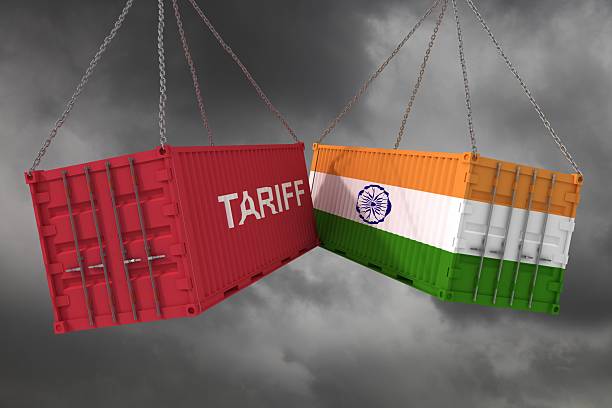By Justice Markandey Katju (Former Justice Supreme Court of India)
Recently US President Trump has issued a statement proposing to raise tariffs on Indian goods sold in USA above the 25% he has already imposed. Many people in India think this is a bad thing for India as it will harm our economy, but in my opinion it may be a good thing, a blessing in disguise. Let me explain.
As I have repeatedly explained, our national aim must be to rapidly industrialise, and transform India into a modern industrial giant, like China or USA, for which we have all the potential with our huge pool of technical talent ( thousands of bright engineers, technicians, and scientists ), and immense natural resources.
Without this transformation we will never be able to abolish the curse which has plagued us for centuries– our massive poverty, massive unemployment, appalling level of child malnutrition ( every second child in India is malnourished, according to Global Hunger Index, and the condition has become worse in recent years ), almost total lack of good education and proper healthcare for the masses, etc.
https://theadvocatepost.org/blog/2025/03/30/the-great-somali-chess-game-diplomacy-desperation-and-delusions-of-control/
However, the problem is how do we rapidly industrialise ? As mentioned above, there is no dearth of technical talent and natural resources in our country. So we can easily increase production of anything–steel, aluminium, cement, food, etc. But that is not enough. We must also be able to sell this increased production, for the goods produced must also be sold, and here is where the real problem lies.
The vast majority of our people are too poor, and have very little purchasing power.They earn so little that they spend most of their incomes in buying food, which is essential for survival, and have hardly any money left to buy industrial goods. The problem therefore is not how to increase production ( something we can easily do ) but how to raise the purchasing power of our masses, so that the increased production can be sold.
I may explain how this was done in the Soviet Union.
In the Soviet Union, after the 1917 Bolshevik Revolution, industrialisation on a large scale began in 1928 when the first 5-Year Plan was adopted. The broad methodology which was then adopted in the Soviet Union was this: prices and wages were fixed by the government, and every 2 years or so prices of most commodities (food, clothes, etc ) were reduced by 5-10 per cent (and sometimes wages raised by 5-10 per cent). The result was that by state action the purchasing power of workers was raised (since wage is relative to the price index).
So even with the same wage, the workers could now buy more goods ( since goods were getting steadily cheaper ). In this way, the domestic market steadily expanded. Simultaneously, production was stepped up, and the increased goods could be absorbed in the domestic market.
Thus the Soviet economy rapidly grew after 1928 with full employment, at a time when the Great Depression (following the Wall Street Slump of 1929) resulted in a huge decline of almost 50% in production and massive unemployment in Western countries like USA, UK, Germany and France.
https://theadvocatepost.org/blog/2024/08/28/the-impact-of-climate-change-and-environmental-pollution-on-the-right-to-life/
I am not saying India must follow the Soviet model. We can find out any other way of increasing the purchasing power of our masses. But unless we do that the economic situation will not improve, and in fact will in all probability get worse
India has a huge population of 143 crore ( 1430 million ), and if our people’s purchasing power is raised our industries will have a huge domestic market for the goods they produce.
Here it may be mentioned that for stability we must mainly rely on our domestic market, because over-reliance on foreign markets is very precarious, as it may be cut off by another power, or there may be a recession in the foreign country, resulting in reduced production or even closure of our factories producing for foreign sales.
Trump’s new tariffs on India, though ostensibly appearing harmful to us, may in fact well be a blessing in disguise. It will compel us to stop relying on foreign markets for sales of our goods, and instead make us start thinking of ways of increasing the purchasing power of our masses, so that we start relying mainly on our domestic market





